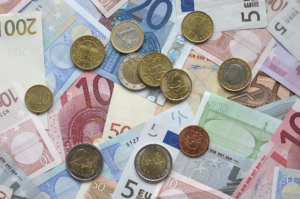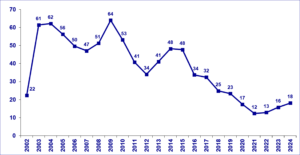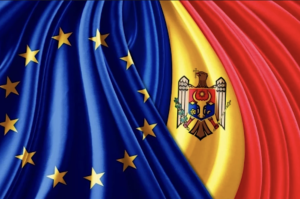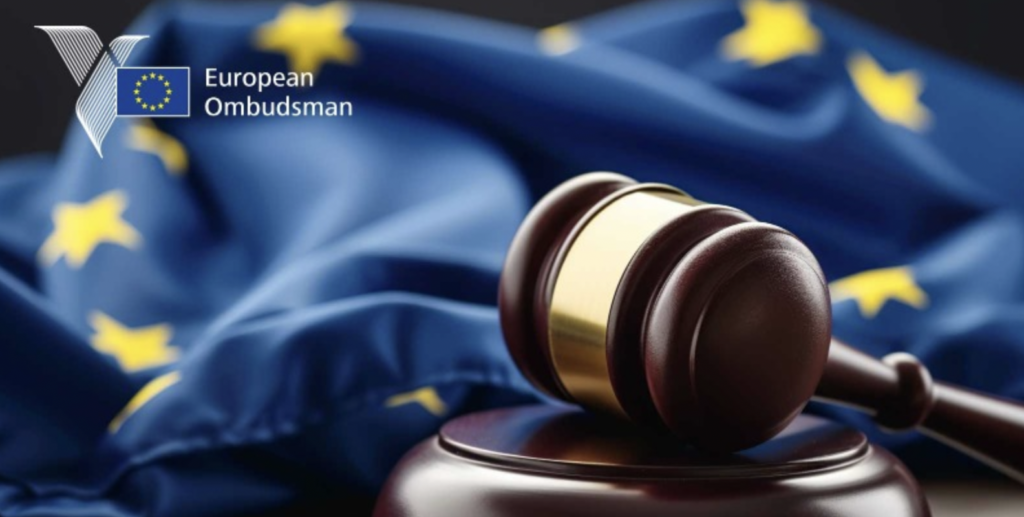| NUMBER OF COUNTERFEIT EURO BANKNOTES CONTINUES TO BE LOW IN 2024

- 554,000 counterfeit euro banknotes withdrawn in 2024 representing, by historical standards, small proportion of total banknotes in circulation
- €20 and €50 most counterfeited denominations, accounting for over 75% of all counterfeit notes withdrawn
- Euro banknotes remain safe and trusted means of payment
- Authenticity of euro banknotes can be verified using “feel, look and tilt” method
 Some 554,000 counterfeit euro banknotes were withdrawn from circulation in 2024. The likelihood of receiving a counterfeit is low, as the number of counterfeits is very small in proportion to genuine euro banknotes in circulation. In 2024, 18 counterfeits were detected per million genuine banknotes in circulation, which is very low compared with the levels observed following the launch of the euro (see chart).
Some 554,000 counterfeit euro banknotes were withdrawn from circulation in 2024. The likelihood of receiving a counterfeit is low, as the number of counterfeits is very small in proportion to genuine euro banknotes in circulation. In 2024, 18 counterfeits were detected per million genuine banknotes in circulation, which is very low compared with the levels observed following the launch of the euro (see chart).
Number of counterfeit euro banknotes detected annually per million genuine notes in circulation
Although the proportion is very small, the actual number of counterfeits has increased compared with the past few years, when the number of counterfeits was exceptionally low following the COVID-19 pandemic. Nonetheless, the number of counterfeits remains lower than in the years leading up to the pandemic.
 €20 and €50 denominations continued to be the most commonly counterfeited, together accounting for more than 75% of the total (see table). 97.8% of the counterfeits were found in euro area countries, while 1.3% were found in non-euro area EU Member States and 0.9% in other parts of the world.
€20 and €50 denominations continued to be the most commonly counterfeited, together accounting for more than 75% of the total (see table). 97.8% of the counterfeits were found in euro area countries, while 1.3% were found in non-euro area EU Member States and 0.9% in other parts of the world.
The public does not need to be concerned about counterfeiting but should remain vigilant. Most counterfeits are easy to detect, as they have either no security features or only very poor imitations of the existing features. Notes can be checked using the simple “feel, look and tilt” method described on our dedicated security features web page or on the websites of the euro area national central banks. The Eurosystem also helps professional cash handlers by ensuring that successfully tested machines for handling and processing banknotes can reliably identify counterfeits and withdraw them from circulation.
If you receive a suspicious banknote, compare it side by side with one you know to be genuine. If your suspicions are confirmed, please contact the police or – depending on national practice – your national central bank or your own retail or commercial bank. The Eurosystem actively supports law enforcement agencies in the fight against currency counterfeiting.
Judgment of the Court of Justice of the European Union
| AIR PASSENGER RIGHTS: A BOARDING PASS MAY BE SUFFICIENT TO PROVE A CONFIRMED RESERVATION ON A FLIGHT

Payment by a third party of the price of the package tour, including a flight, does not exclude the right to compensation in the event of long delay of a flight
An air carrier offering charter flights concluded a contract with a tour operator. Under that contract, the carrier operated, on specific dates, flights for which that tour operator, after paying for the flights, sold tickets to air passengers.
Two air passengers participated in a package tour, including a flight from Tenerife to Warsaw, the arrival of which was delayed by more than 22 hours. The contract relating to the package tour was concluded between a third company, on behalf of those passengers, and that tour operator.
The passengers concerned claimed compensation from the air carrier under EU law. The latter refused to pay that compensation. It argued that those passengers are not in possession of a confirmed and paid reservation for that flight and copies of boarding passes are not sufficient in that regard. According to that carrier, the package tour in which those passengers participated was paid for by a third company on preferential terms. Consequently, they
travelled free of charge or at a reduced fare, which excludes their right to payment of compensation.
The Polish court, before which those passengers brought an action, referred the matter to the Court of Justice. It wishes to ascertain whether, contrary to the position of the air carrier, those passengers should be compensated under EU law.
The Court has replied in the affirmative.
It considers that a boarding pass may constitute other proof that the reservation has been accepted and registered by the air carrier or tour operator for the flight concerned. Thus, apart from in abnormal circumstances, passengers who presented themselves for check-in and who took the flight concerned, with a boarding pass for that flight, must be regarded as having a confirmed reservation on that flight.
Moreover, the Court does not consider the passengers in question to have travelled free of charge or at a reduced fare not available directly or indirectly to the public. Such a situation would arise only if it were the air carrier itself which granted them such a possibility. Accordingly, the fact that a third party paid the price of the package tour to the tour operator and that the latter, in turn, paid the price of the flight to the air carrier in accordance with market conditions does not prevent the passengers from enjoying the right to compensation.
The Court also states that it is for the air carrier to demonstrate, in accordance with the rules laid down by national law, that a passenger has travelled free of charge or at such a reduced fare.
| U.S. Military Bets Big on AI

In the tech world, quantum computing and artificial intelligence are set to be the next big game-changers. China recently revealed its new superconducting chip, Zuchongzhi 3.0, and now the U.S. is stepping up its game by investing more in these key areas. In March, the White House announced it is pushing Congress to double the funding for AI research, boosting it from $973million to almost $2 billion. Meanwhile, the Department of Defense is teaming up with a startup called Scale AI for the “Thunderforge” project, which will use AI to help make military decisions faster.
AI is increasingly being used in military systems. While many big tech companies avoided having their innovations used for military purposes, they’re now changing their tune. Take OpenAI, for instance—it once banned military use of its tech but has recently updated its rules.
In December 2024, OpenAI, led by Sam Altman, announced plans to create advanced AI tools for national security. They’ve teamed up with Anduril, a defence tech company started by Palmer Luckey, to boost U.S. anti-drone systems and better detect airborne threats in real time.
This shift started a year ago when OpenAI changed its policy to allow military partnerships. Adding the former head of the National Security Agency, General Paul Nakasone to its board was another big move. A recent internal report also shows that national security is now a top priority for the company.
Anthropic has joined the trend too. In November 2024, they teamed up with Palantir Technologies to give the U.S. military special access to their AI. At the same time, Palantir and Anduril, two big names in defence tech, started a group to make sure the U.S. stays ahead in military AI.
“Thunderforge”: a strategic programme?
These recent moves show a big change in policy: Silicon Valley is now teaming up with the Pentagon. A good example is Scale AI, a startup that supplies training data to big names like OpenAI, Google, Microsoft, and Meta. They’re set to play a key role in the Thunderforge project. On March 5, they signed a deal with the Department of Defense, taking another step towards bringing AI into the military.
Run by the Defense Innovation Unit (DIU), Thunderforge plans to use AI to make military decision-making faster and more efficient. Big tech players like Microsoft and Anduril are part of the project, which could include things like simulations, mission planning, helping with strategic decisions, and automating some military tasks.
The project will start with the U.S. military’s Indo-Pacific and European commands and then slowly roll out to other areas.
| EMA QUALIFIES FIRST ARTIFICIAL INTELLIGENCE TOOL TO DIAGNOSE INFLAMMATORY LIVER DISEASE (MASH) IN BIOPSY SAMPLES

Artificial intelligence tool reliably identifies disease severity and reduces variability
European Medecines Agency ‘s human medicines committee (CHMP) has issued the first Qualification Opinion (QO) on an innovative development methodology based on artificial intelligence (AI). The tool, called AIM-NASH, helps pathologists analyse liver biopsy scans to identify the severity of MASH (metabolic dysfunction associated steatohepatitis; formerly known as non-alcoholic steatohepatitis NASH) in clinical trials.
MASH is a condition where fat builds up in the liver, causing inflammation, irritation and scarring over time, without significant alcohol use or other reasons for liver injury. MASH is linked to obesity, type 2 diabetes, high blood pressure, abnormal cholesterol, and belly fat. If untreated, it can lead to advanced liver disease.
The AIM-NASH tool is expected to enhance the reliability and efficiency of clinical trials for new MASH treatments by reducing variability in measuring disease activity (inflammation and fibrosis).
Following a public consultation, CHMP issued an opinion to qualify this method, which means that the committee can accept evidence generated by the tool as scientifically valid in future applications. CHMP agreed that the tool can increase reproducibility and repeatability in assessments for new MASH treatments. It can help researchers obtain clearer evidence on the benefits of new treatments in clinical trials that include fewer patients. Ultimately, this can bring effective treatments to patients faster.
Testing new MASH treatments often relies on liver biopsies, where small pieces of liver tissue are taken to confirm inflammation and scarring. These biopsies are the gold standard for demonstrating the efficacy of new, investigational medicines. However, high variability in MASH/NASH clinical trials is a challenge, as specialists who review biopsy samples may not always agree on the severity of inflammation or scarring.
The evidence submitted to CHMP shows that AIM-NASH biopsy readings, verified by one expert pathologist, can reliably determine MASH disease activity with less variability than the current standard used in clinical trials, which relies on a consensus by three independent pathologists.
AIM-NASH is an AI-based system that employs a machine learning model trained on more than 100,000 annotations from 59 pathologists who assessed over 5,000 liver biopsies across nine large clinical trials.
The qualified tool is ‘locked,’ which means the machine learning model cannot be modified or replaced. CHMP encourages the optimisation of the model, acknowledging that major changes may require re-qualification of the tool.
All EMA’s activities on AI are coordinated under the multiannual AI workplan by EMA and the Heads of Medicines Agencies, aiming to ensure safe and responsible use of AI across the European medicines regulatory network.
| EUROPEAN PARLIAMENT APPROVES NEW SUPPORT PLAN FOR MOLDOVA

- New €1.9 billion facility to accelerate Moldova’s socio-economic reforms, strengthen resilience, and advance EU integration
- Designed to mitigate the profound impact on Moldova of Russia’s war of aggression against Ukraine
- Agreement secures more grants, accelerated funding and robust oversight by Parliament
The European Parliament gave its green light to a new support facility for Moldova, focusing on better financing and democratic oversight.
MEPs approved a provisional agreement reached by Parliament and Council negotiators on the Reform and Growth Facility for Moldova. Through grants and low‑interest loans, the Facility seeks to help Moldova deal with the major challenges it is facing, in particular the profound impact of Russia’s war of aggression against Ukraine on the country’s security, economy and people. The instrument should also strengthen Moldova’s resilience against Russian hybrid attacks and interference targeting its democratic processes and institutions.
Key improvements secured in negotiations between MEPs and Council:
Increased grant-based support: negotiators agreed to allocate €520 million in grants – a €100 million increase compared to the initial proposal – alongside €1.5 billion in low-interest loans. This adjustment will enable Moldova to reform without accumulating unsustainable debt.
Accelerated funding access: the Facility envisages 18% pre-financing of total support, up from the originally-proposed 7%, enabling rapid deployment of resources to boost energy security, anti‑corruption infrastructure and public service modernisation.
Administrative capacity building: 20% of grant funds will be earmarked to shore up Moldova’s institutions through digital governance systems, civil service training, and judicial reforms – prerequisites for effective EU fund management.
Reinforced oversight framework: to ensure full parliamentary scrutiny, the agreement establishes a dialogue between Parliament and the Commission to review implementation progress regularly.
The agreement also allows for voluntary contributions by other donors, such as international financing organisations, to offer Moldova additional financial support. Finally, the Facility cannot support activities or measures that would undermine the country’s sovereignty or territorial integrity.
MEPs approved the Facility with 499 votes, 117 against and 44 abstentions.
Quotes
Siegfried Mureșan (EPP, Romania), co-rapporteur for the Committee on Budgets, said: “Given recent geopolitical developments, the EU is ready to act. With today’s vote on the €1.9 billion Moldova Reform & Growth Facility, we are boosting pre-financing from 7% to 18% and adding an extra €100 million in grants. This is our commitment to doing more and acting swiftly to support Moldova and our neighbours in these challenging times.”
Background
Between 2025 and 2027, the Facility will give Moldova access to a maximum of €1.885 billion (in current prices), which includes up to €1.5 billion in concessional loans. The Facility also provides €520 million in grants, of which 385 million is in the form of non-repayable financial support and €135 million set aside to provision the loans, retained in the EU budget as a guarantee for investors. The Reform and Growth Facility is part of a broader EU Growth Plan for Moldova, aimed at doubling its economy within a decade while fostering socio-economic stability. The instrument is modelled on similar initiatives in other EU candidate regions, such as the Western Balkans Facility. It represents a significant step forward in Moldova’s path towards EU membership.
| 30,000 NEW GOLD LEAVES TO REGILD THE MONUMENTAL STATUE OF NOTRE-DAME DE LA GARDE IN MARSEILLE

SESAR JU partner, Startical has launched its first satellite, IOD-1, as part of ECHOES, a SESAR Digital Sky Demonstrator showing how satellite-based communications can enhance air traffic management (ATM). Co-funded by the EU through the European Climate, Infrastructure and Environment Executive Agency and supported by the SESAR Joint Undertaking, ECHOES aims to improve flight efficiency, safety, and sustainability.
Manufactured by GomSpace, IOD-1 is equipped with VHF and ADS-B capabilities to test real-time communication between aircraft and air traffic control from space. The project seeks to address coverage gaps over remote and oceanic regions, where real-time voice and data links are currently unavailable. By enabling continuous aircraft monitoring and optimised routing, this technology could reduce fuel consumption and CO₂ emissions.
A second demonstrator, IOD-2, is also set for testing. Both satellites will undergo trials in the South Atlantic region, with the involvement of air navigation service providers from Europe, Africa, and South America. The results will inform the potential development of a scalable satellite network, supporting more resilient and efficient air traffic operations.
Aircraft flying over the ocean no longer appear on ground-based radars once they are about 350 kilometres from the coast. To monitor and stay in touch with these flights, controllers today rely on high frequency radio and data link communications, through which aircraft can also report their position. While these technologies allow controllers to maintain contact and assure safe separation, their high levels of latency mean that communications is slow and results in significant time lapses. It also means that to ensure safety, controllers must increase separation minima between the aircraft.
Although global navigation satellite systems and space-based automatic dependent surveillance-broadcast (ADS-B) already exist for some parts of the world, there is still limited use of satellite-based technologies for communication, which in turn limits airspace capacity and flight efficiency.
The overall objective of ECHOES is to demonstrate the feasibility of space-based solution for very high frequency (VHF) communications (voice and datalink) in air traffic management. Building on initial technical proofs of concept carried out by the VOICE project, the ECHOES Digital Sky Demonstrator will investigate some key functionalities, such as inter-satellite links, on-board processing of data in the satellite or simultaneous transmission and reception of VHF communications. In addition, the Demonstrator will focus on operational aspects of the technologies will also comprise operational topics, involve more stakeholders (airlines and ANSPs) and contribute to the regulatory and standardisation of the space-based VHF technology based on the analysis of end-to-end system performances.
In order to provide the required services and test this technology, in addition to deploying all the needed ground infrastructure, ECHOES will develop, manufacture and launch two satellites in a low earth orbit. These satellites will serve as the platform to test the technologies and services aimed at improving the air navigation services.
| NETWORK SMUGGLING MIGRANTS BETWEEN SPAIN AND FRANCE BUSTED IN MARSEILLE

The criminal network is suspected of smuggling over 1 700 migrants from Spain to France
Europol supported the French National Police (Police Nationale/OLTIM) and the Spanish National Police (Policía Nacional) in dismantling an organised criminal network smuggling migrants from Spain to France.
The investigation was initiated in November 2022 and targeted individuals, based in Marseille, suspected of smuggling migrants between Spain and France. Europol’s analysis of the operational data made it possible to identify additional suspects linked to this criminal organisation and further advance the case.
The action day on 16 March 2025 led to:
- 19 arrests
- 17 house searches
- Seizures including a semi-rigid boat, 4 vehicles and about EUR 20 000 in cash
Over 1 700 migrants smuggled in nearly 500 operations
Migrants were picked up near train stations in Catalonia, Spain and then transported to the French city of Marseille. Each member of the criminal network had a specific task. Some recruited migrants, others arranged transport and some provided temporary accommodation. During car smuggling operations, the criminal network used forerunner vehicles to detect potential law enforcement checkpoints along the route to help them bypass police or customs controls.
The smuggling network operated in a structured way to prepare and execute the smuggling activities. The criminal network charged between EUR 150 and EUR 250 per migrant, depending on the departure point and destination. The suspects smuggled migrants from the Maghreb region, but also from the Middle East, mainly from Syria and from Sub-Saharan Africa. Between May 2023 and August 2024, more than 500 smuggling operations were organised with an estimated turnover of between EUR 250 000 and EUR 427 000 from about 1 700 migrants transported to France.
Europol facilitated the exchange of information and provided operational coordination and analytical support. During the action day, Europol deployed an expert to France to enable the real-time exchange of information and cross-check operational information against Europol’s databases to provide leads to investigators in the field.
| THE US FEDERAL COMMUNICATIONS COMMISSION ESTABLISHES COUNCIL ON NATIONAL SECURITY TO FIGHT FOREIGN THREATS, FOCUS ON CHINA.

The FCC has established a new Council for National Security within the FCC. The Council will leverage the full range of the Commission’s regulatory, investigatory, and enforcement authorities to promote America’s national security and counter foreign adversaries, particularly the threats posed by the People’s Republic of China (PRC) and Chinese Communist Party (CCP).
These actions are attributed to Salt Typhoon, an advanced persistent threat actor thought to be affiliated with China’s Ministry of State Security (MSS). The group has engaged in prominent cyber espionage operations, particularly focussing on infiltrating and compromising multiple U.S. telecommunications networks.
“Today, the country faces a persistent and constant threat from foreign adversaries, particularly the CCP,” said Chairman Carr. “These bad actors are always exploring ways to breach our networks, devices, and technology ecosystem. It is more important than ever that the FCC remain vigilant and protect Americans and American companies from these threats. Because these threats now cut across a range of sectors that the FCC regulates, it is important that the FCC’s national security efforts pull resources from a variety of FCC organizations.”
The Council will have a 3-part goal: (1) Reduce the American technology and telecommunications sectors’ trade and supply chain dependencies on foreign adversaries; (2) Mitigate America’s vulnerabilities to cyberattacks, espionage, and surveillance by foreign adversaries; and (3) Ensure the U.S. wins the strategic competition with China over critical technologies, such as 5G and 6G, AI, satellites and space, quantum computing, robotics and autonomous systems, and the Internet of Things.
The Council will be comprised of representatives from eight Bureaus and Offices within the FCC, fostering cross-agency collaboration and information sharing. The Council will facilitate the Chairman’s ability to implement a comprehensive national security agenda and facilitate the Commission’s engagement with national security partners across the Executive Branch and in Congress.
These actions are attributed to Salt Typhoon, an advanced persistent threat actor thought to be affiliated with China’s Ministry of State Security (MSS). The group has engaged in prominent cyber espionage operations, particularly focussing on infiltrating and compromising multiple U.S. telecommunications networks.
| EU SEAS: POLLUTING SHIPS CAN STILL SLIP THROUGH THE NET

A report published by the European Court of Auditors (ECA) sounds the alarm: ships and vessels continue to pollute EU maritime waters. Even though EU legislation is improving and is sometimes even tougher than international rules, implementation by the 22 coastal EU member states is far from satisfactory. Actions to prevent, tackle, track and penalise various types of ship-source pollution are not up to the task, the auditors warn.
EU legislation incorporates relevant international rules – sometimes with even stricter requirements – in areas such as oil pollution, shipwrecks, and sulphur emissions. However, the EU auditors also warn of gaps that the EU still needs to fill, particularly as regards pollution risks. For instance, it is still possible for shipowners to circumvent their recycling obligations by adopting a non-EU flag before dismantling their ships. The data speak for themselves: while 1 in every 7 ships in the world was flying the EU flag in 2022, the figure for the end-of-life fleet was 50% lower. Similarly, EU rules on containers lost at sea are far from watertight. First, there is no guarantee that all losses are declared; and second, very few containers are recovered.
“Pollution at sea caused by ships remains a major problem, and despite a number of improvements in recent years, EU action is not really able to steer us out of troubled waters”, said Nikolaos Milionis, the ECA Member responsible for the audit. “In fact, with over three-quarters of European seas estimated to have a pollution problem, the zero-pollution ambition to protect people’s health, biodiversity and fish stocks is still not within sight.”
The auditors also note that EU countries underuse tools – such as a network of standby oil-spill response vessels and drone detection – with which the EU provided them to help tackle ship-source pollution. A striking example is the European Satellite Oil Monitoring Service (CleanSeaNet) for surveillance and early detection of possible pollution incidents. In 2022-2023, it identified a total of 7 731 possible spills in EU seas, mostly in Spain (1462), Greece (1367) and Italy (1188). However, the EU auditors found that member states acted on fewer than half of these alerts and confirmed pollution in only 7 % of cases, one reason for which was the time that elapsed between the satellite image being taken and the pollution actually being checked.
The auditors also found that member state authorities do not carry out enough preventive inspections of ships, and penalties for polluters remain low. Those responsible for illegally discharging polluting substances into the sea rarely face effective or dissuasive penalties, and prosecutions are rare. Similarly, few member states report breaches relating to the retrieval of abandoned, lost, or discarded fishing gear.
Overall, the auditors conclude that neither the European Commission nor the member states fully track the EU money used to combat seawater pollution. They do not have an overview of the results actually achieved, or of how they could be replicated on a larger scale. At the same time, the audit reveals that the EU has difficulties monitoring ship-source pollution. The actual amount of oil spills, contaminants and marine litter from ships remains largely unknown, as does the identity of polluters.
| HOW THE EUROPEAN COMMISSION MONITORS EU FUNDS GRANTED TO GREECE IN THE CONTEXT OF BORDER MANAGEMENT OPERATIONS

The case concerned how the European Commission ensures fundamental rights compliance in the context of EU funds granted to Greece for border management. The complainants, several non-governmental organisations, raised concerns that the Commission had failed effectively to monitor and evaluate EU-funded border management activities, against a background of persistent allegations of serious human rights violations by the Greek authorities.
The inquiry identified areas that the Commission should address to improve how it monitors and ensures compliance with fundamental rights in this area. However, as the Commission is currently conducting its own assessment of one of the individual cases of alleged fundamental rights violations raised in this inquiry, and will also assess Greece’s spending under the relevant programme, the Ombudsman closed the case, finding that no further inquiries were justified. She nevertheless set out some suggestions to the Commission to address the issues identified in the course of the inquiry.
In particular, the Ombudsman urged the Commission to put in place guidelines for assessing compliance with fundamental rights throughout the course of the programme implementation, notably regarding the related ‘enabling condition’ for accessing funds. As part of these guidelines, the Commission should establish criteria to determine under what circumstances it will withhold or suspend EU funds for non-compliance with fundamental rights and the related funding condition, and publish these criteria. In its assessment of credible complaints about fundamental rights violations and of the overall Greek programme, the Commission should consider whether Greece continues to fulfil the fundamental rights condition related to the funds in question. The Ombudsman also made suggestions about the transparency of the monitoring process and measures to strengthen the involvement of civil society.

